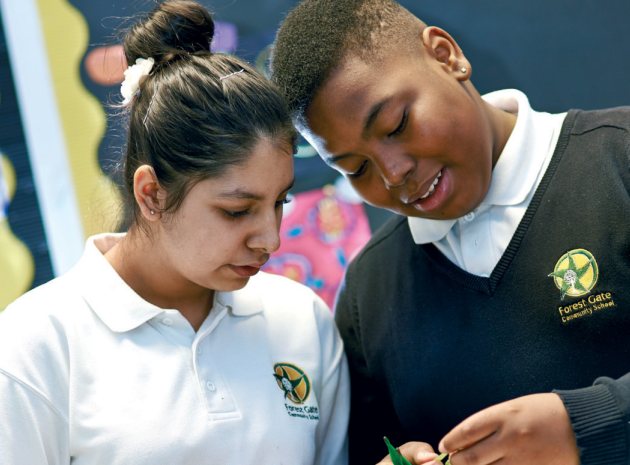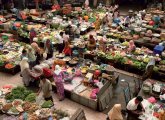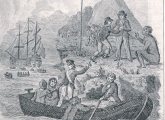Fibonacci, fractals, fraud prevention and more – Dr Joanna Rhodes brings biology and maths together with some truly absorbing activities…
Today you will…
…Learn about the appearance of different numerical sequences and symmetry in nature, and how these relate to the wider world
It is Summer 2011 in Tennessee in the United States. A man plays his banjo on the veranda and crickets chirp in the long grass. As the evening draws near millions and millions of cicadas in full chorus suddenly drown out the music. The man puts his banjo down. There is little point trying to play over them, he remembers from the last time this happened in 1998. He knows this will happen again in 2024. What is so special about this pattern? The local cicadas have evolved to breed to a 13-year cycle [Additional Resource 1]. In other regions cicadas mass breed to 7 and 17-year cycles, all of which are prime numbers. Numbers in nature are ubiquitous and fascinating. The same codes that help cicadas to avoid predators form the basis of the encryption that keeps our credit cards and personal details safe from fraudsters.
In this lesson, ideas about nature and numbers are presented with strong cross-curricular links between biology and mathematics at KS4. Students explore How Science Works and how it relates to the wider world bringing in themes such as fraud prevention, data encryption, art, architecture and music.…
Starter activity
It is helpful to begin by exploring the 1 idea of simple symmetry with students. Students can discuss the human form and its symmetry. Most textbook illustrations show the body very close to symmetrical so pupils could take measurements from images to investigate this. However, a real human body is far from symmetrical. Students will find it intriguing to investigate how they would appear if their face were truly symmetrical. To help there is a useful internet tool called Symface [AR2]. This allow students to see how some well-known celebrities would look if they had symmetrical facial features. They can upload a picture of themselves to generate their own results
Main activities
1 Lay the foundations
Use whole sunflower heads (fresh or dried), a cauliflower, a range of fresh flowers, pine cones and apples cut in half across the middle as physical resources for students to examine. Introduce the task using the video Nature by Numbers [AR3], which is a dramatic introduction of the occurrence of key numbers and angles in biological systems and is set with stunning imagery to music. A further video with narrated explanation suitable for KS4 level students is called Nature and Numbers [AR4]. Explain to students that the Fibonacci series is created when the two previous numbers are added together to give the sequence 1,1,2,3,5,8,13,21 and so on. Students should write out their own Fibonacci series and use it to spot individual numbers from the series in nature. This is especially rewarding if physical resources have been provided. A useful worksheet is available from Discovery Education (linked to the Discovery Channel) and can be downloaded along with full instructions for use [AR5]. Images of flowers and seed heads are helpfully reproduced for students to refer to if completing questions as homework. Finally, brainstorm some animals with spiral features (the shape is similar to the spiral of the snail, the nautilus, and other seashells). Ask students to research what function the spiral could serve?
2 Fractals
Fractals are one of the more recent discoveries in the field of mathematics. Uncovered in the late 1960s by Benoit Mandelbrot, fractals are geometric figures that are made up of patterns and repeat themselves at smaller scales infinitely. Fractals are also common in everyday life, in nature, our bodies, and even in popular culture. To help students understand the concept of a fractal it is useful to look at a fern. Each frond of the fern is a copy of the shape of the main plant. This was generated mathematically by Michael Barnsley and zooming in and out is demonstrated well in a number of videos available online [AR6]. Romanesco broccoli is also a useful resource where it is clear to see that each of the smaller sprouts around the vegetable resembles the broccoli as a whole [AR7]. The Fractal Foundation recommend a number of different “Fractivities” that provide an engaging introduction to fractals in nature [AR8]. One of these involves drawing a fractal tree, which generates a form remarkably similar to a real tree. Students practise measuring the distance between branches, and then determine the ratio. They also measure the angles of the branches, and identify as obtuse or acute. Another engaging activity is a fractal scavenger hunt [AR9]. Encourage students to photograph examples that they find always looking for self-similarity as with a fern (where each leaf also looks like the whole fern) and trees (where each branch looks like a smaller version of the whole tree). Although these activities are mathematical in nature they should be accessible to all pupils. A specific task which may be suitable to engage lower ability pupils is to use toothpicks and mini marshmallows to create a fractal tetrahedron [AR10].
Stretch them further
Students could plot their own logarithmic spiral. A work sheet to help can be found on the discovery education website [AR5]. For further cross-curricular links you could discuss how rectangles with fibonacci dimensions are used in art and architecture. Use the examples such as Leonardo Da Vinci’s paintings and Graham Sutherland’s tapestry in Coventry Cathedral. In architecture the Eden Project in Cornwall used fibonacci dimensions as did the Parthenon built by the ancient Greeks and Giza great pyramid built by the EGyptians. It is even said that mozart used these numbers in composing his music. It also features in popular literature and conspiracy theories such as the da vinci code by dan brown. ask students what other examples they can find in nature and the arts [ar11].
Additional resources
AR1: Prime number cicadas tinyurl.com/3cfkk3s
AR2: Symface website tinyurl.com/n5ufjl
AR3: Nature by nubmers musical clip tinyurl.com/ybc7jxy
AR4: Nature and numbers narrated clip tinyurl.com/crfcgrg
AR5: Discovery education – fibonacci numbers in nature tinyurl.com/d9a7769
AR6: Michael BArnsely fern tinyurl.com/chvg8ho
AR7: Fractals in nature tinyurl.com/d5l2qm4
AR8: The Fractal Foundation – fractivities tinyurl.com/c9wx5cn
AR9: Fractal scavenger hunt tinyurl.com/ybkawkx
AR10: Fractal tetrahedroms tinyurl.com/c2ojwv5
AR11: Fibonacci numbers and the golden section in art, architecture and music tinyurl.com/7a5hu4h
Summary
Cicadas have evolved to breed in a prime number cycle and the relationship between prime numbers is as mathematically elusive to us as it is to the predators that the cicadas manage to outwit with their unusual choice of cycle. This year Shinichi Mochizuki of Kyoto University in Japan may have come up with a mathematical proof, which allows us to work with prime numbers in a way that nature has evolved to do naturally. This could revolutionise the security of encrypted data such as bank and personal details as well as improving national security and communications between nations. Ask students to come up with their own way to encrypt a message. They will need to provide a key so that the intended recipient can decode the message. As an additional challenge ask them to use principles from the natural world that they have investigated during the lesson in order to do this.
About the expert
Dr Joanna L. Rhodes M.Chem, D.Phil, MRSC teaches at Shelley College, Huddersfield.











Fibonacci, fractals, fraud prevention and more – Dr Joanna Rhodes brings biology and maths together with some truly absorbing activities…